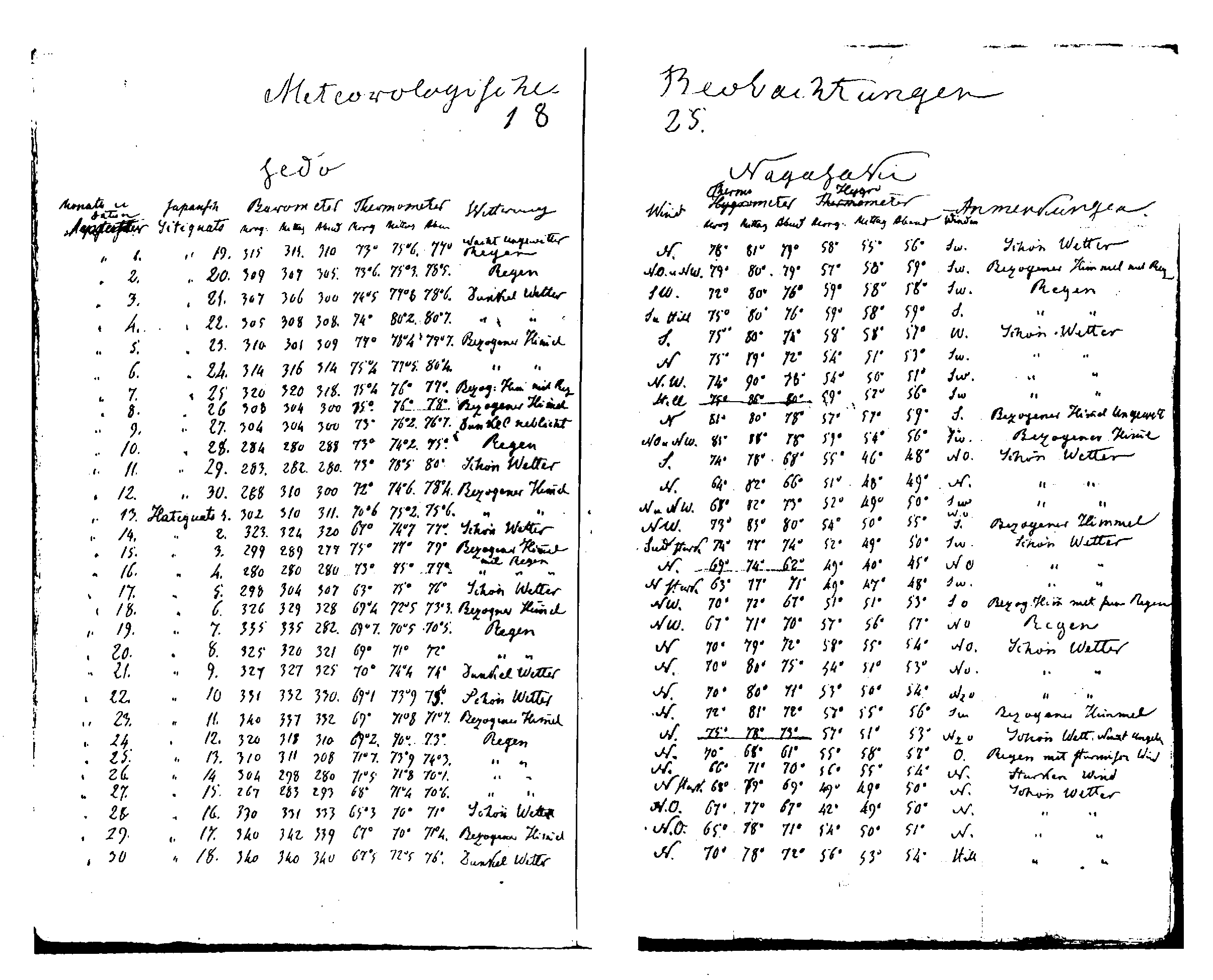Early systematic meteorological observations in Japan
Masumi Zaiki and Gunther Konnen
The observations were taken at Dejima by the Chief of the Trade Factory, J. Cock Blomhoff for 1819-1823 and then by the medical doctor P.F. von Siebold for 1825-1828 and are of air temperature, and of pressure and humidity. The data by Blomhoff are in von Siebold’s handwriting and apparently copied by him from an older document. The data by von Siebold for 23 Sept 1827-1828 are in two versions: one apparently being the originals in his own handwriting and a copy by an anonymous copyist. For the period Jan-Dec 1825, there were parallel readings in Tokyo (Figure); von Siebold also observed during his journey from Nagasaki to the Palace of the Shogun in Edo (now Tokyo) during Mar-July 1826.

Thermometer readings were made in full degrees Fahrenheit. In the period 1819-1822, the temperature sometimes refers to readings inside the building also. Pressure is recorded only in the von Siebold period. The von Siebold pressure readings after 22 Sept 1827 were in English inches (a unit of 2.5400 cm) divided in decimals. However, the von Siebold readings Nov 1826-22 Sept 1827 are in non-English inches, which are divided in lines according to the duodecimal system (12 lines = 1 inch). From the heights of the barometer we inferred that the unit refers to French inches (a unit of 2.7070 cm).
In the 1819-1828 observations, only von Siebold recorded air humidity. It was measured by his home-made hygrometer ‘manufactured from a hair of a Japanese beauty, which was scalded in soda and then in pure water’.
The pressure and temperature observations were usually taken three times a day, referred to as ‘Morgen’, ‘Mittag’, and ‘Abend’ (morning, midday and evening). There is no explicit mention of the observation hours in the von Siebold documents. Fitting to the annual mean diurnal course of Nagasaki Observatory III 1978-1999 reveals an observation schedule 6:00, 12:00 and 22:00 Local Time (LT), where Dejima LT = UTC + 8:40.
A primary problem of the early instrumental period is the poor coverage outside Europe in the early 19th and 18th centuries. Among the many blank spots is Japan, where the official meteorological network by JMA started in the 1870s. These Blomhoff/von Siebold records extend its start back from 1878 to 1819, the significance of the data reaches further than just an extension of the Japanese instrumental record back in time. First, the recovered series happens to be in a region of the Earth that is poorly covered by instrumental data; second, it overlaps with the long daily series of visual weather reports as documented in diaries of Japanese administrators during the Edo period (1603-1868) at many places in Japan.





